SEARCH THE WEBSITE
Artificial light makes it tough to tune into the natural rhythms of the day, which significantly impacts our health and productivity.
Real estate leaders who value wellness should take notice. The fundamental principles of lighting and its effects on human circadian rhythm should become an industry standard.
Thankfully, the link between lighting and human health is already well-studied and solutions are available on the market. One example is circadian lamps.These LED lamps are designed to promote alertness, performance, and well-being by using colo r temperature, lighting level, and timing to align natural human rhythms (our internal clock ) with the world around us.In other words, the right amount of the right light at the right time.
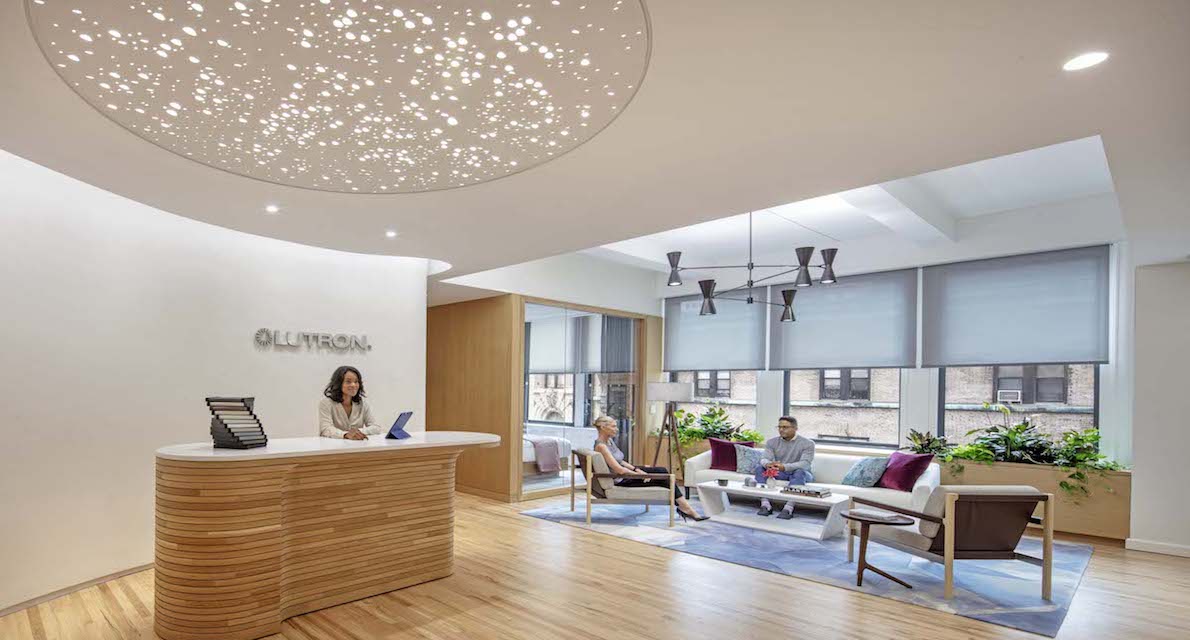
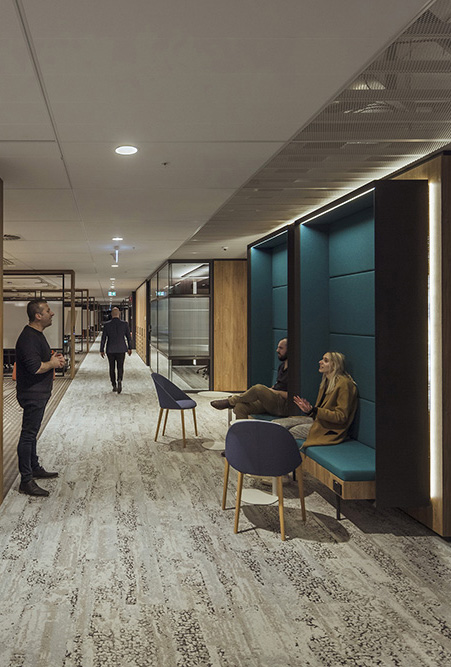
How does light in a health building impact wellbeing? Primarily the key data points are around productivity and concentration, energy levels, mood, and sleep quality.
In terms of space planning and interior architecture, we start with ensuring enhanced access to daylight not just around the perimeter of a floor plate but right through to its core.
This is then combined with consideration for glare reduction to minimize the risk of daylight bouncing off screens and other surfaces, a visual distraction and source of low level anxiety.
Thirdly, the implementation of circadian lighting and smart lighting systems in tune with the daily 24hr cycle help fill an interior with suitable tones of light according to the time of day, season and location.
Finally, healthy building and wellness real estate certification systems such as WELL, LEED and BREEAM provide guidance via global benchmarks for wellbeing designers to use.
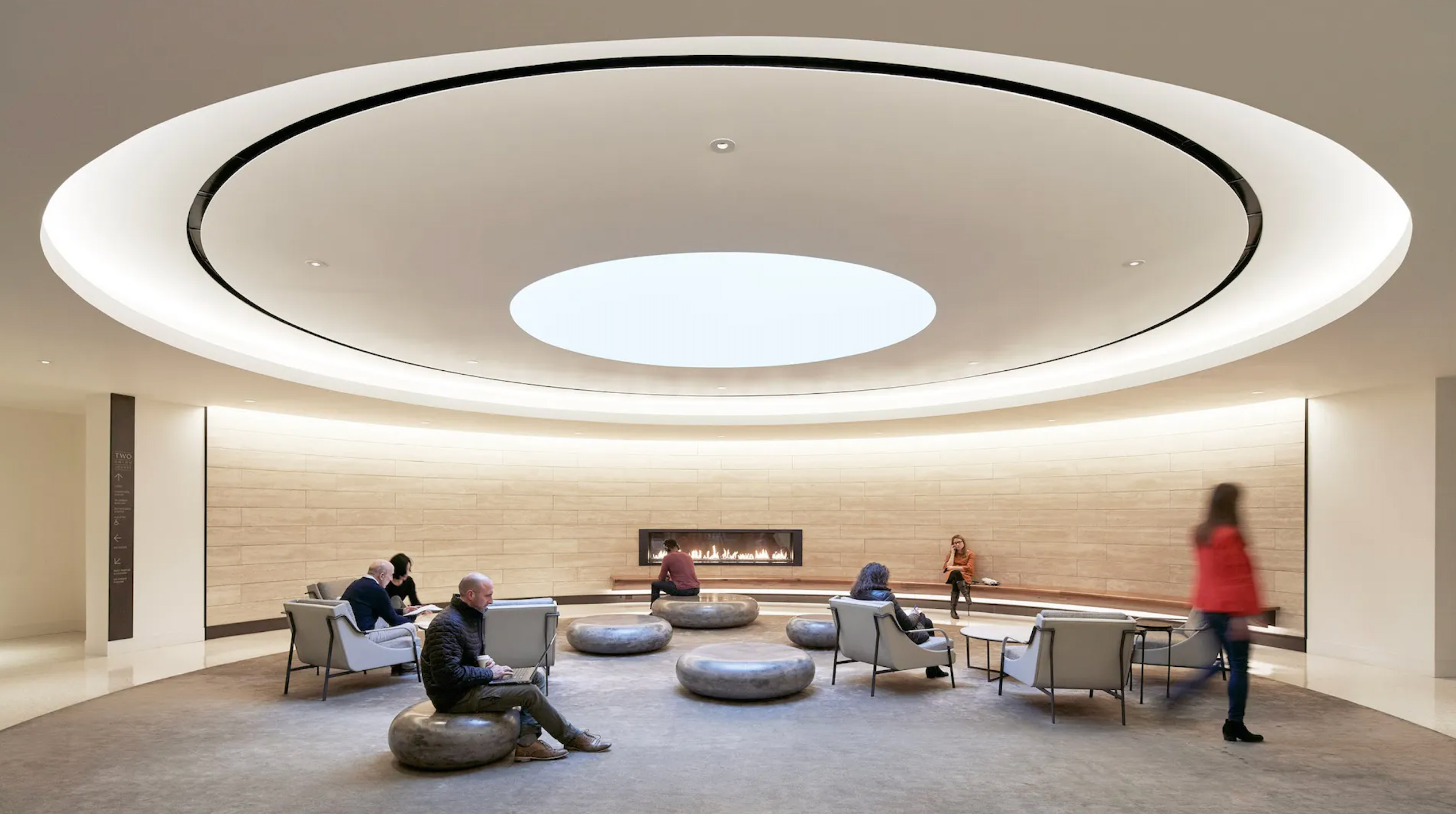

A carefully considered lighting plan is a fundamental concept for a healthy indoor environment nowadays - whether its purpose is for learning, working, healing, or sleeping.
Circadian lighting strategies and the incorporation of daylight both seek to align occupants to their natural rhythms, while considerations such as glare reduction are essential when designing more specific lighting needs. Lastly, and arguably most importantly, the formation of a lighting plan is key to consider all design possibilities and optimize positive health impacts.
Connecting building occupants to their innate rhythms and environments, a trend within the world of biophilic design and its near cousin, healthy design has been shown to provide numerous health benefits, and can be achieved through the incorporation of healthy lighting design.
As with many healthy building strategies, a holistic design approach that finds ways to incorporate nature-inspired principles to connect us with the natural world tend to bring the greatest rewards in wellbeing terms.
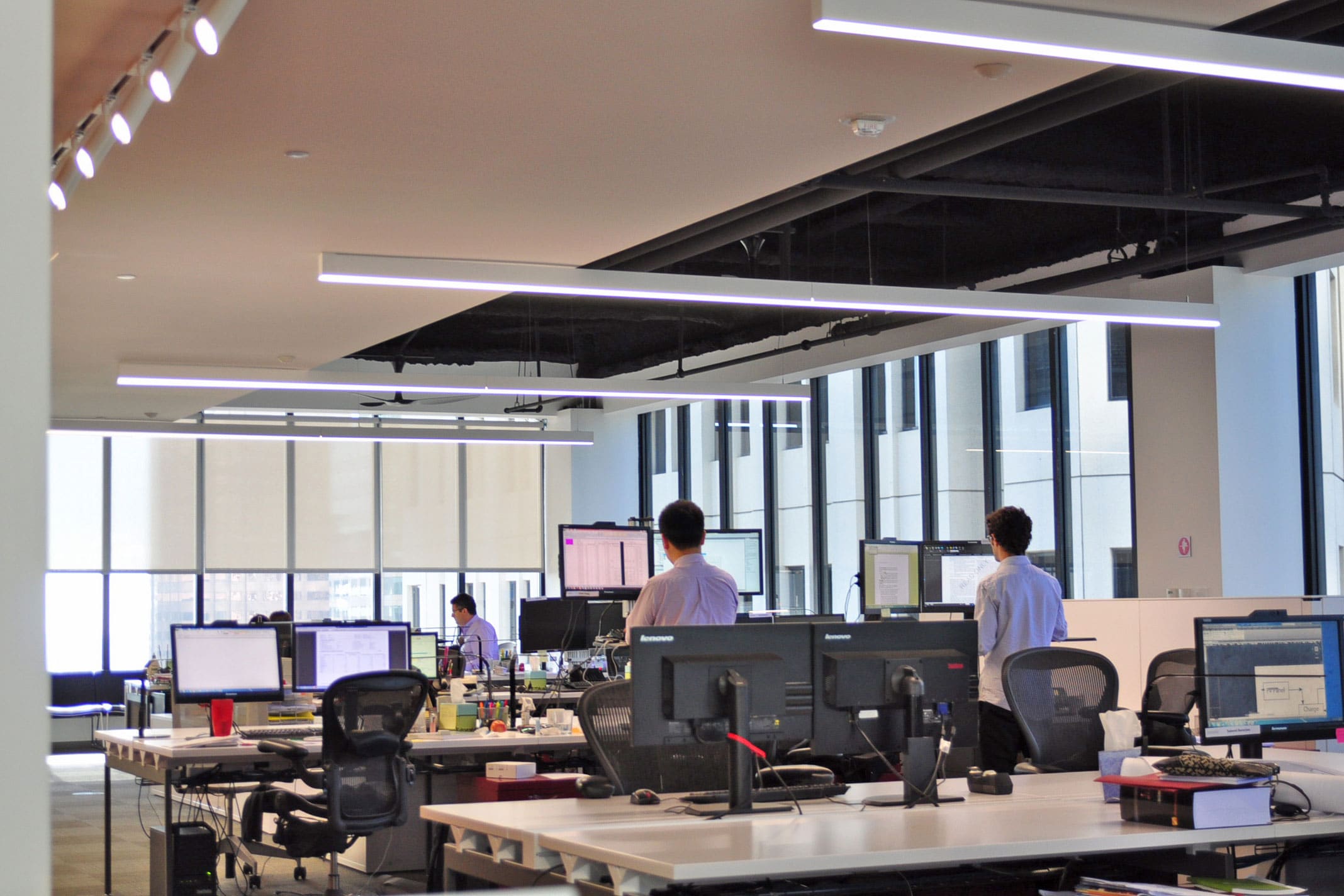
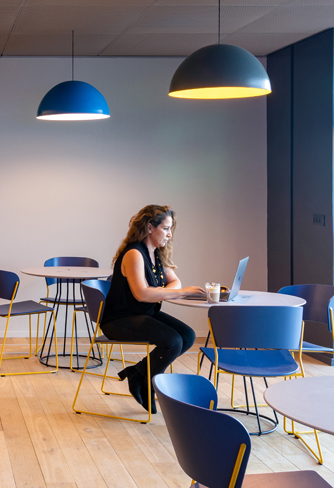
Natural daylight is one of the most important elements in green building interiors, an essential building block of health and wellness interior design”. In addition to synchronizing us with our circadian rhythms, natural light has been found to promote an improvement in mood, alertness, concentration, and faster cognitive processing. For academic learning or professional work environments, natural light has been proven in numerous studies to reduce absenteeism, increase job satisfaction and productivity, and even increase student test scores.
Daylight has also been shown to increase patient recovery times, which from a healthcare perspective can provide a multitude of other indirect benefits. In addition, one study showed that indoor spaces with daylighting contained fewer bacteria than those without (WELL Building Standard). Daylight can be incorporated into a healthy building through strategies such as adequate windows, sidelights, and skylights, integrating illuminance and natural daily rhythms into a space.
Thankfully, the link between lighting and human health is already well-studied and solutions are available on the market. One example is circadian lamps.These LED lamps are designed to promote alertness, performance, and well-being by using colo r temperature, lighting level, and timing to align natural human rhythms (our internal clock ) with the world around us.In other words, the right amount of the right light at the right time.
In addition to solely the volume and intensity of light being brought into a space, when incorporating windows, considerations such as the quality of external views also matter, and indeed whether the windows are operable. Natural landscapes or views onto internal gardens provide additional biophilic benefits, while operable windows can provide natural ventilation advantages.
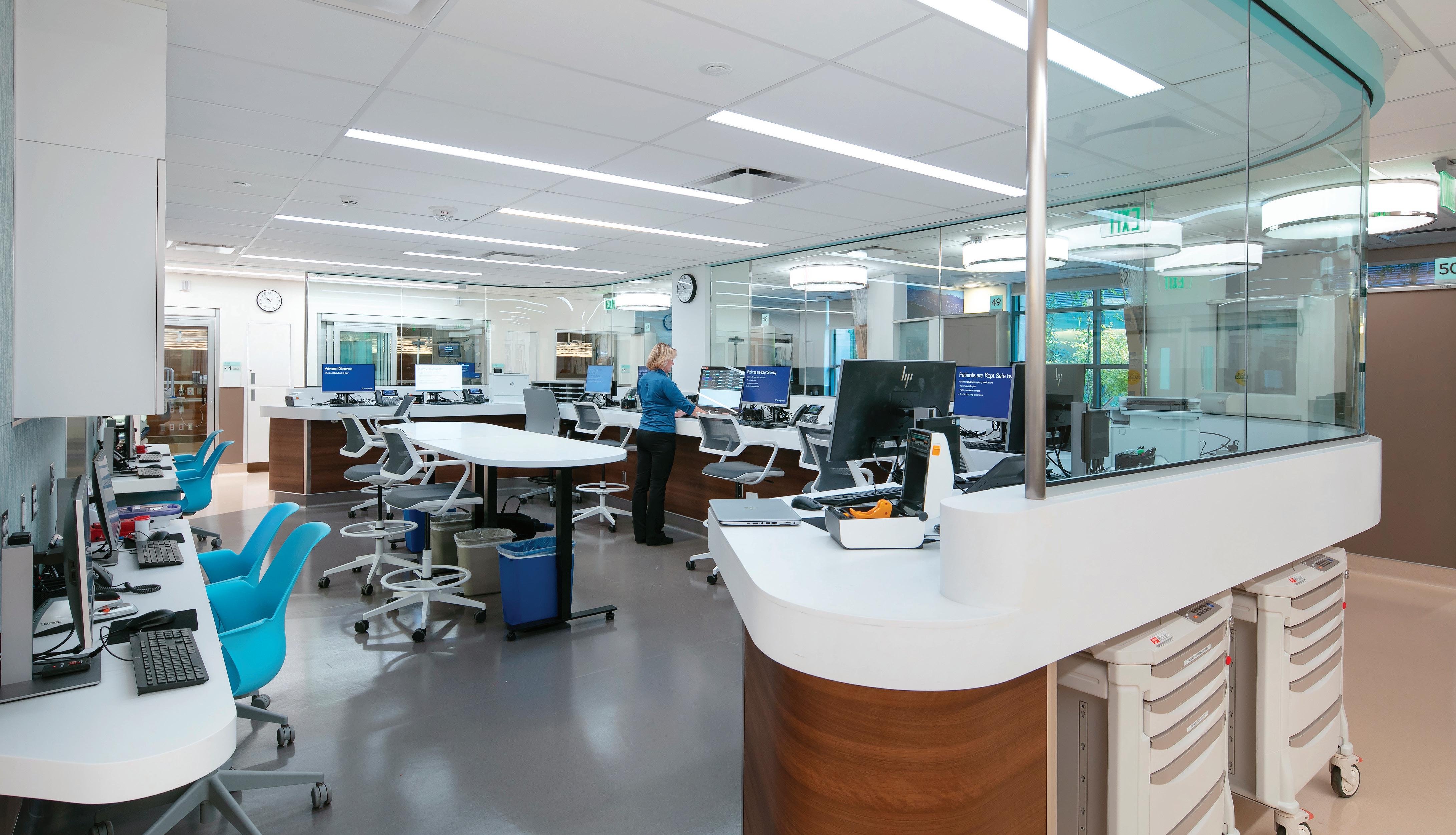
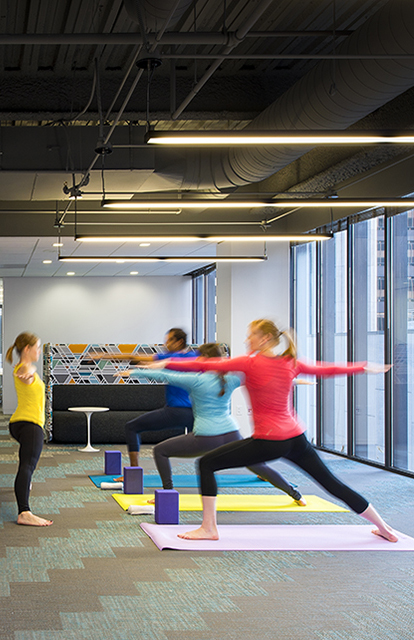
Other light-based considerations in a healthy interior include the control of surface glare, which can increase the visual experience of occupants in a space. Glare is essentially the excessive brightness of light, which can occur from the source directly, through reflection off other surfaces, or from extreme lighting contrasts in a space. In general, glare can cause visual discomfort such as headaches and eye fatigue, even leading to migraines if not properly monitored.
The source of light, lighting control (such as dimming capabilities), surface reflectivity, and general lighting layout should be considered to reduce the negative impacts of glare. In addition, shading and overhangs can be used to offset some lighting contrasts. When natural light is incorporated into spaces, extreme illuminance contrasts can occur, so it is important for wellness architects to regulate the amount and location of light that enters a space to ensure the most harmonious lighting strategies.
The potential benefits of circadian lighting are considerable, making this type of lighting an increasingly common feature in wellness real estate and wellbeing interior design projects around the world. Circadian rhythm lighting systems are strategically designed to positively affect our health, alertness and productivity through the regulation of light tone and intensity during each 24hr cycle.
When our circadian rhythms are disrupted, most commonly from exposure to bright light after dark or insufficient illumination during the day, mental wellbeing issues such as sleep disruption and low levels of anxiety can easily arise. Circadian lighting is an innovative new trend within the world of healthy design that follows the circadian rhythm - something like a 24-hour internal clock.
These lighting systems are designed to reflect nature’s daily light cycle, prompting periods of mental alertness in the morning and afternoon with light from the blue-white end of the spectrum, before slowly fading into amber hues in the evenings and again in the early mornings. The idea is to reduce the disruptive effects from artificial light on our body’s natural rhythms through smart, multi-sensory lighting design. Factors such as the duration, timing, and hue of light exposure are important to achieve natural, circadian light quality and improve occupant wellbeing.
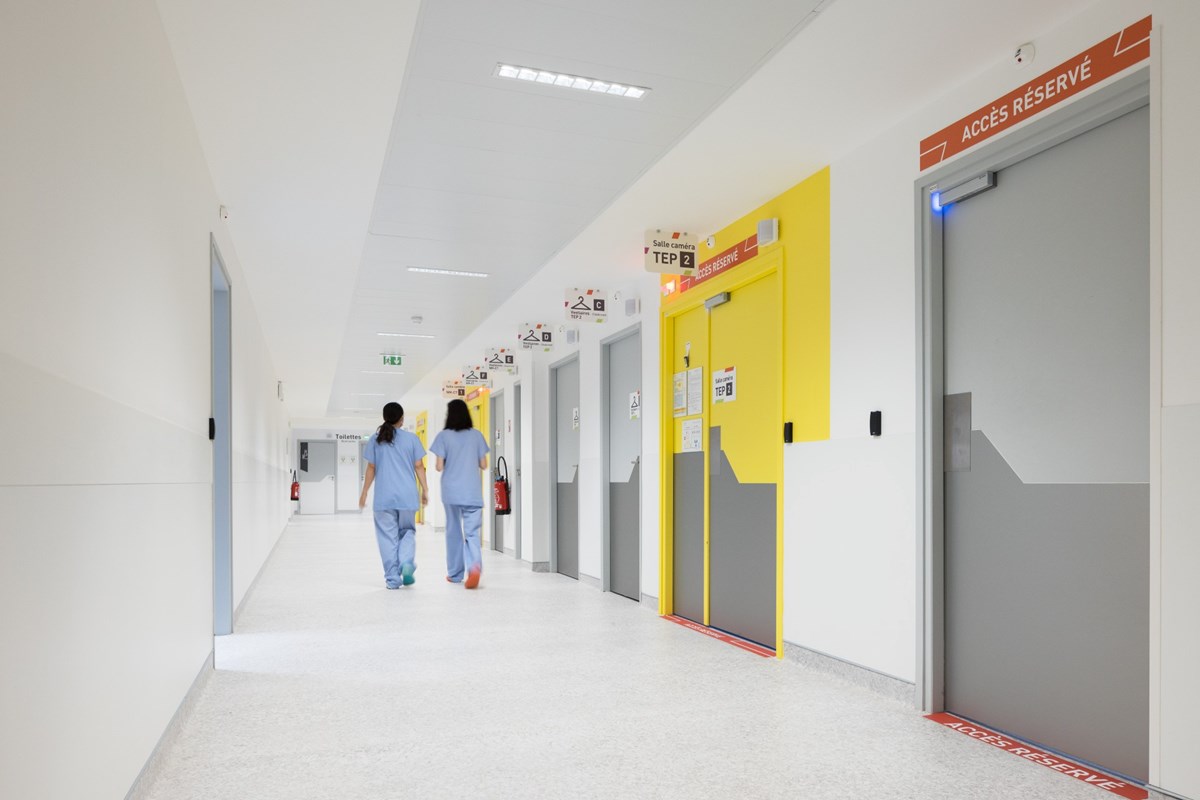
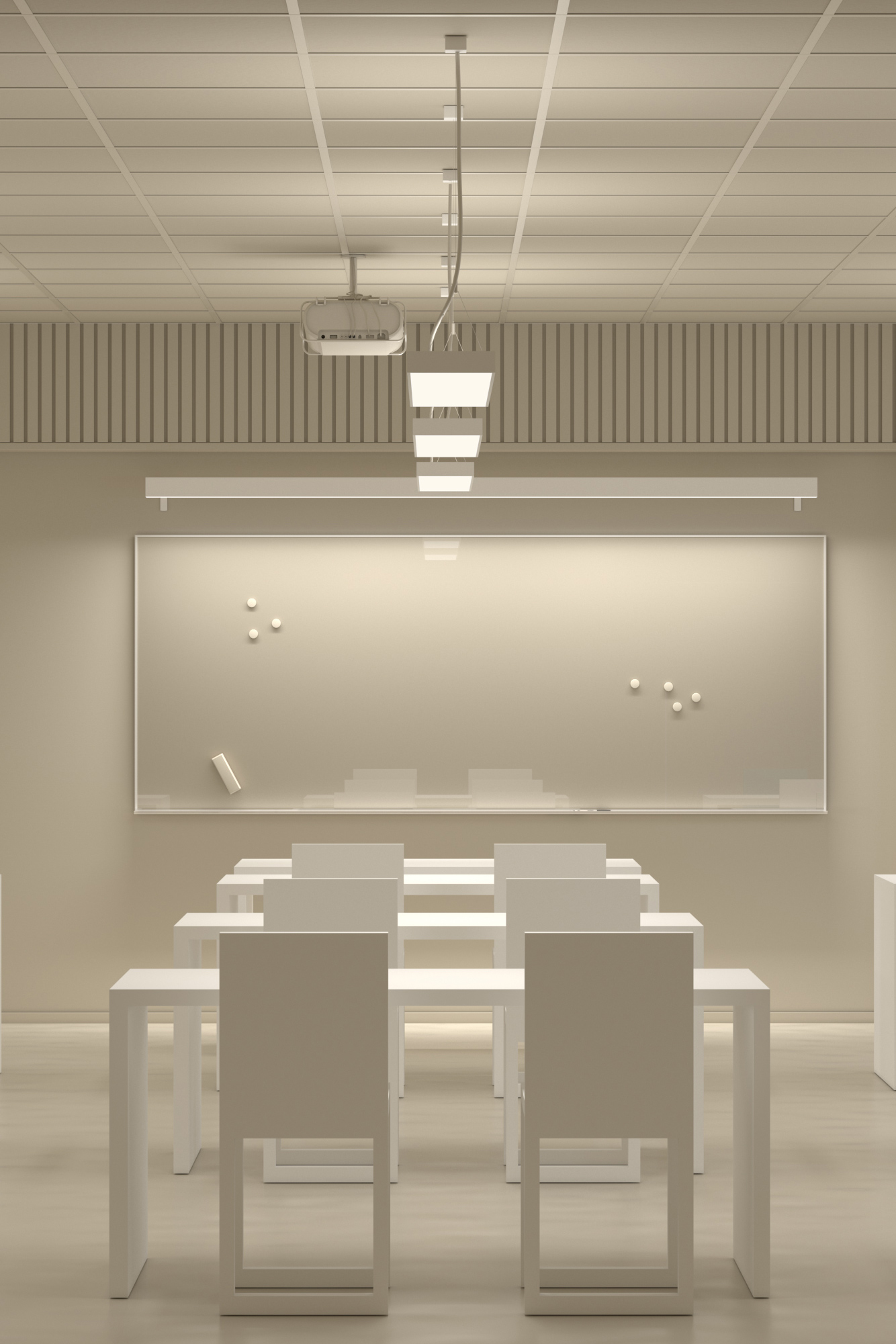
As alluded to previously, the various strategies of healthy lighting are inevitably intertwined, and therefore must be considered in one cohesive lighting strategy for wellbeing interiors and healthy buildings. For example, daylighting incorporation is essentially a “free” way to integrate circadian lighting in a space, yet without proper glare control it can cause visual discomfort for occupants. Because of scenarios such as these, it is important to incorporate a complete lighting plan to ensure harmony between the various strategies. This plan should incorporate occupant use of the space according to each zone, as well as the type of task in question.
Real estate leaders who value wellness should take notice. The fundamental principles of lighting and its effects on human circadian rhythm should become an industry standard.
The creation of a thoughtful operations schedule and lighting layout in the design stage is a necessary approach to consider all stakeholders and increase occupant health and comfort. When daylight, electric light, color, space use, and the characteristics of building users are considered together, we can maximize healthy building occupant wellbeing. As with any design strategy, an integrated cross-departmental approach is essential for success.
Certification systems such as LEED and WELL provide detailed guidance on wellness lighting strategies. LEED has several credits on the topic, while WELL contains an entire “Light” concept that investigates more specific strategies.
LEED contains an Interior Lighting credit, which focuses on glare and lighting control, and mentions factors such as color rendering and surface reflectivity (LEED). In addition, there is a credit focused on Daylight which mentions the importance of circadian rhythms, connection to the outdoors, and the energy reducing environmental benefits of daylight, as with most all LEED credits.
Thankfully, the link between lighting and human health is already well-studied and solutions are available on the market. One example is circadian lamps.These LED lamps are designed to promote alertness, performance, and well-being by using colo r temperature, lighting level, and timing to align natural human rhythms (our internal clock ) with the world around us.In other words, the right amount of the right light at the right time.
WELL contains a plethora of information on the subject of light, going in depth on all aspects of healthy lighting strategies. All categories mentioned above (circadian lighting, daylight, glare reduction, and lighting plan) are included in WELL credits, as well as several other more specific distinguishing factors.
When considering how to incorporate healthy lighting into a space, LEED and WELL both provide research-based solutions that can act as a guide for lighting design. Sources:
Determan, Jim, et al. “THE IMPACT OF BIOPHILIC LEARNING SPACES ON STUDENT SUCCESS.” Oct. 2019.
Taddonio. “Energy-Efficient Hospital Lighting Strategies Pay Off Quickly.” 2011. LEED Credit Library: Indoor Environmental Quality
https://www.usgbc.org/credits?Category=%22Indoor+environmental+quality%22 Sources:
WELL: Lighting Concept
https://v2.wellcertified.com/en/v2.1/light
